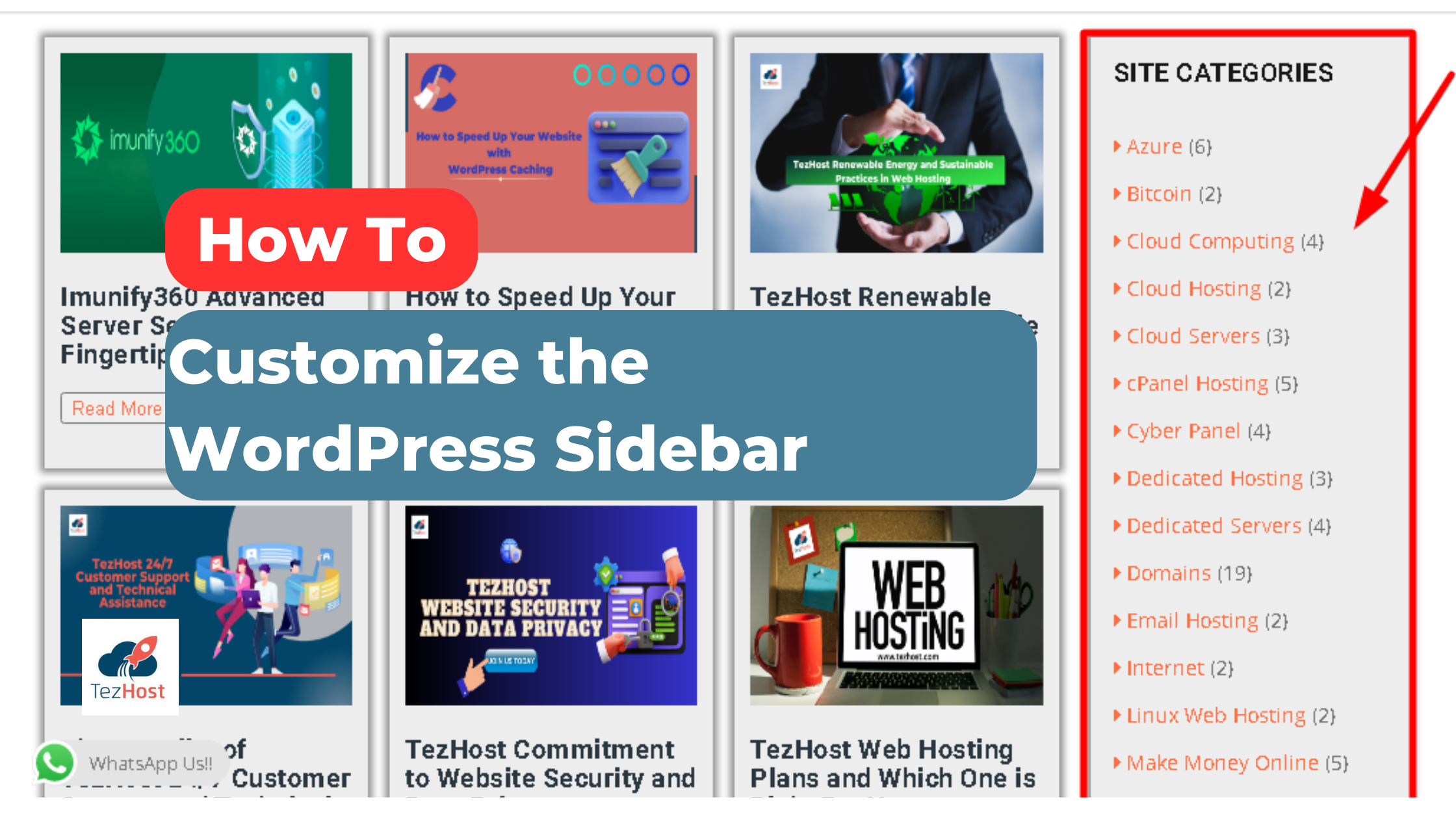How to Speed Up Your Website with WordPress Caching
Are you fatigued from the never-ending wait for your WordPress site to load? Are you yearning to bestow upon your visitors a browsing experience that is nothing short of lightning-fast? Well, my friend, you’ve stumbled upon the perfect destination! In this post, we will embark on a marvelous expedition into the realm of caching and uncover how it possesses the remarkable ability to accelerate the performance of your WordPress site. So, fasten your seatbelts, grab a steaming cup of coffee, and let us plunge headfirst into this exciting adventure!
The Significance of Speed for Your WordPress Site
Before we immerse ourselves in the intricate details of caching, let us first take a moment to comprehend why the speed of your site holds immense importance. Envision this scenario: you stumble upon a captivating website, eagerly click the link, and then… you wait. And wait. And wait a little more. Exasperating, isn’t it?
Well, guess what? Your visitors share the same sentiment. In today’s fast-paced digital world, attention spans have become shorter than ever before. Studies reveal that if your website takes more than a few seconds to load, users are likely to abandon it and never return. A painful blow indeed!
Not only does a sluggish loading time repel users, but it also adversely affects your search engine rankings. Search engines like Google take into account page speed when determining search results. If you desire your site to ascend the ranks and attract organic traffic galore, it is imperative to pay meticulous attention to its speed.
What exactly is Caching?
Now that we comprehend the significance of a swift website, let us delve into the subject of caching. In simple terms, caching entails the process of temporarily storing data in a cache, enabling swift accessibility. Visualize it as having a ready-made cup of coffee awaiting you rather than waiting for the barista to meticulously brew a fresh cup every single time you place an order.
When a user visits your WordPress site, their browser sends a request to your server, which then retrieves all the necessary data to display the requested page. This process requires time. However, with the implementation of caching, the server saves a copy of the requested page, including its elements and resources, and stores it within a cache. Subsequent requests for the same page can be effortlessly served directly from the cache, bypassing the time-consuming retrieval process.
Diverse Varieties of Caching
Now that we have established a fundamental understanding of caching, let us explore the various types of caching that can be implemented on your WordPress site. Acquainting ourselves with these options will enable us to make informed decisions and select the most suitable caching method for your individual requirements.
1. Browser Caching
Browser caching empowers you to store specific files, such as images, CSS, and JavaScript, directly on the user’s browser. This implies that when a visitor returns to your site or navigates to a different page within your site, their browser can retrieve these files from the cache rather than downloading them anew. It is akin to possessing a personal file cabinet within the confines of your browser!
Enabling browser caching is a relatively straightforward process. You may choose to add expiration headers to your server configuration or employ caching plugins, which we shall discuss in greater detail later on. By implementing browser caching, you can reduce the number of requests your server receives, thereby enhancing your site’s speed and overall performance.
2. Server-Side Caching
Server-side caching entails the technique of storing dynamically generated content as static HTML files on the server. Consequently, when a user requests a page, the server can serve the pre-generated HTML file directly from the cache, bypassing the need to generate it from scratch. It is reminiscent of having an exceedingly efficient butler who effortlessly anticipates your every need!
Various approaches exist to enable server-side caching, such as employing caching plugins, content delivery networks (CDNs), or even caching mechanisms at the server level. These methodologies aid in reducing server load and vastly improving the response time of your WordPress site.
Related Post: What Is CDN And How Does It Work? ©
3. Database Caching
In addition to serving static files, WordPress heavily relies on database queries to fetch and display content. As the name suggests, database caching entails storing the results of frequently executed database queries within a cache, eliminating the necessity of querying the database every time the same information is requested. It is akin to having a personal assistant who is well-acquainted with your preferences and has everything meticulously prepared in advance!
By implementing database caching, you can reduce the number of database queries and expedite the retrieval process, thereby resulting in swifter page load times. Caching plugins frequently offer options for database caching, thereby simplifying the process of optimizing your WordPress site.
Caching Plugins: Your Covert Weapon
Now that you have familiarized yourself with the diverse types of caching, you may be wondering how to implement them on your WordPress site. Fret not, for caching plugins are here to save the day!
Caching plugins serve as powerful tools that simplify the process of enabling caching on your site. These plugins adeptly handle the intricacies of caching configuration, rendering it accessible even to non-technical users. Below are a few renowned caching plugins that warrant your consideration:
W3 Total Cache: A feature-rich caching plugin that offers a broad array of options to optimize the performance of your WordPress site.
WP Super Cache: A user-friendly caching plugin that generates static HTML files and seamlessly serves them to your visitors, effectively reducing the load on your server.
WP Rocket: A premium caching plugin that provides a comprehensive suite of features, encompassing page caching, browser caching, and database optimization.
LightSpeed Cache: A robust caching plugin specifically designed for the LightSpeed server, offering advanced optimization features and seamless integration with your WordPress site.
Installing and configuring a caching plugin generally follows a straightforward process. Once activated, these plugins diligently handle caching automatically, guaranteeing that your site operates with the swiftness of a cheetah gliding across roller skates!
Caching Best Practices
Now that you have embarked on this caching voyage and acquainted yourself with caching and caching plugins, let us explore some best practices that shall enable you to extract the utmost benefits from this powerful technique. By adhering to these recommendations, you can supercharge your WordPress site and leave your competitors trailing in the digital dust!
1. Regularly Update WordPress and Plugins
Keeping your WordPress installation and plugins up to date is pivotal for both site security and performance. Developers frequently release updates that address vulnerabilities, enhance features, and improve compatibility. By diligently staying up to date, you ensure that your site remains optimally configured for caching and enjoys the latest enhancements.
2. Optimize Images and Media
Images and media files have earned a notorious reputation for slowing down websites. Bulky file sizes place an unnecessary burden on your server, inevitably leading to prolonged page load times. To mitigate this issue, compress your images without compromising quality, employing tools such as OptiPNG, JPEGmini, or TinyPNG. Additionally, consider employing lazy loading techniques that solely load images when they enter the user’s view, thereby conserving valuable resources.
3. Minify and Combine CSS and JavaScript
An excess of CSS and JavaScript files can contribute to unnecessary bloating of your pages, resulting in slower load times. Minification involves removing redundant characters, such as white spaces and comments, from these files, effectively reducing their size. Further, combining multiple CSS and JavaScript files into a single file substantially diminishes the number of requests required to load your site. Caching plugins frequently include options for automatic minification and file combination, streamlining this optimization process.
4. Leverage Content Delivery Networks (CDNs)
Content Delivery Networks, also known as CDNs, constitute a network of servers distributed across the globe. By storing your static files, such as images and CSS, on these servers, CDNs expedite the delivery process by serving your content from the server closest to the user’s geographical location. This reduces latency and accelerates the overall performance of your site. Prominent CDNs such as Cloudflare and MaxCDN seamlessly integrate with WordPress, offering a variety of caching and optimization features.
5. Test and Monitor Your Site’s Performance
Lastly, it is essential to conduct regular tests and monitor your site’s performance to ensure that caching and other optimizations are operating effectively. Tools such as Google PageSpeed Insights, Pingdom, or GTmetrix furnish valuable insights into your site’s speed, identify potential bottlenecks, and suggest further improvements. By actively monitoring performance, you can fine-tune your caching setup and remain vigilant for any potential issues.
Conclusion
Congratulations on embarking on this caching journey and uncovering the astounding benefits it can bring to your WordPress site. By implementing caching techniques, leveraging caching plugins, and adhering to best practices, you can bestow upon your visitors a lightning-fast browsing experience while simultaneously elevating your site’s search engine rankings. TezHost provide LS Cache plugin features in various hosting plans that helps the customers with WordPress Caching. Remember, speed holds paramount importance in the digital realm, and with caching at your disposal, you possess the power to outpace your competitors and establish your site as a paragon of swiftness!
For more such informative posts head on to our Blogs section.
Click here for hosting deals and discounts on checkouts!
TezHost Editorial
TezHost Editorial staff is a team of Marketing experts lead by Arif Wali
Comment:






No Comments yet!